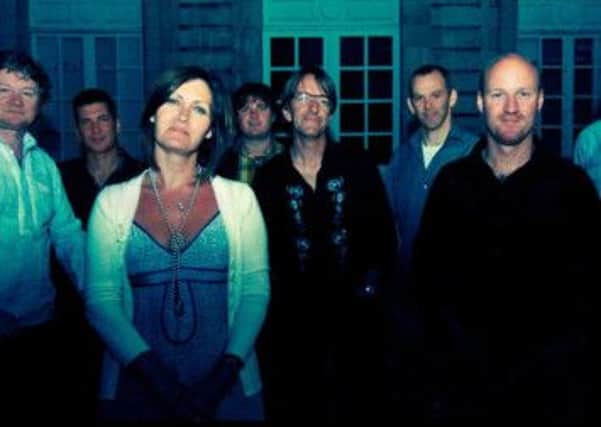Jazz & Folk take big steps in Scotland in 2013


Such vagaries of tempo don’t help the memory but, looking back, 2013 seemed a year of consolidation and some notable anniversaries, rather than spectacular developments.
One significant anniversary was the 30th birthday of the Lowland and Border Pipers’ Society, which emerged three decades ago in a seemingly arcane attempt to resurrect Scotland’s bellows-blown bagpipe, long consigned to museum cases. Despite the cynicism of many, the society was catalyst in a complete revival of Border pipes and Scottish small pipes, to the extent that they have become ubiquitous across the overlapping piping and folk scenes, challenging the established hegemony of the great Highland bagpipe.
Advertisement
Hide AdTheir sound would have been widely heard during Glasgow’s Piping Live! festival, which also celebrated a birthday, its tenth, this year.
Another 30th anniversary was that of Capercaillie, a bunch of youthful enthusiasts from the west coast, featuring the limpid vocals of Karen Matheson, who became an international name, playing in Hollywood’s Rob Roy and pitching a Gaelic song into the pop chart.
Gaeldom enjoyed its fair share of anniversaries, with Sabhal Mór Ostaig on Skye marking 40 years of vibrant evolution from optimistically converted farm steading to vibrant 21st-century campus and Gaelic cultural centre, celebrating the birthday with a triumphant concert during January’s Celtic Connections. The rock band Runrig, whose peak of popularity was a significant element in Gaelic and wider Scottish cultural resurgence, also celebrated its 40th anniversary.
Also chalking up four decades was Edinburgh Folk Club, a mainstay of the folk scene, whose aptly named Carrying Stream festival for the past decade has celebrated the memory of folklorist and genial patriarch of the Scottish folk revival, Hamish Henderson.
Among notable albums, the aforementioned bellows pipes revival was reflected in a fine duo album from Findlay MacDonald on Border pipes and eclectic Shetland fiddler Chris Stout, The Cauld Wind, bursting with fine tunes and inspired playing. The big guns, such as Breabach and Daimh, also produced fine, pipe and fiddle-led albums, but it was a year when fiddles – and notably their female players – sounded out, among them the quartet Rant, with the full dynamic and harmonic possibilities of four fiddles explored by Jenna and Bethany Reid, Lauren MacColl and Sarah-Jane Summers.
Summers also figured amid the current Scots interest in Scandinavian music, with her Highland-accented but still Nordically inclined collaboration with Finnish guitarist Juhani Silvola in a fine album, while Vamm saw Shetland fiddler Catriona Macdonald join her Perthshire counterpart Patsy Reid and Norwegian mandola player Marit Fält.
Advertisement
Hide AdThe jazz year began with the Ellingtonian sweet thunder of the Scottish National Jazz Orchestra’s superb live album, In the Spirit of the Duke, and ended in a Nordic-inspired visual and aural prog-jazz extravaganza as NeWt released its NeWt North CD and DVD, recorded during the Shetland Jazz Festival. The trio’s inventive guitarist, Graeme Stephen also kept busy with his live scores for such classic German Expressionist silent films as Sunrise, Nosferatu and, latterly, The Cabinet of Dr Caligari.
From its Ellington celebration, the SNJO went on to consolidate its international reputation while pulling off collaborations with such stellar guests as saxophonists Dave Leibman and Branford Marsalis, vocalist extraordinaire Kurt Elling and Italian trumpet maestro Paolo Fresu.
Advertisement
Hide AdMy own recollections of two standout gigs include further Ellingtonia – a memorable performance of the Duke’s sacred music by the Edinburgh Jazz Festival Orchestra under the direction of Clark Tracey in the august precincts of Dunfermline Abbey – where tap dancer Junior Laniyan’s fleet-footed finale during David Danced Before the Lord was greeted by real thunder, of a suitably Old Testament belligerence. In contrast, Venezuelan pianist Leo Blanco pulled off a gem of a solo spot exploring his music’s Latin American and African roots, during the Glasgow Jazz festival.
After reprising Miles Davis with the SNJO, trumpeter Fresu returned in invigorating partnership with Cuban pianist Omar Sosa and Indian master-percussionist Trilok Gurtu in a tour organised by the Scottish Jazz Federation’s J-Word initiative, which also brought over long-standing American fusion outfit the Yellowjackets.
In Edinburgh, a new and potentially regular jazz venue emerged in Le Monde boutique hotel, under the direction of singer-promoter Todd Gordon, with its British Vocal Jazz Festival within the Fringe presenting an impressive line-up including Clare Teal, Christine Tobin, Ian Shaw and Jacqui Dankworth. The venue went on to host the Scottish Jazz Awards in October, with winners including pianist Euan Stevenson (Emerging Artist), saxophonist Konrad Wiszniewski (Instrumentalist) and Das Kontras (Album of the Year).
One off-the-wall yet ultimately inspired venture was Edinburgh pianist David Patrick’s jazz arrangement of Igor Stravinsky’s Rite of Spring to mark the centenary of this landmark orchestral work. Staged in Edinburgh’s ever-industrious Jazz Bar, it proved suitably powerful, elemental – and perfectly at home on a jazz platform.